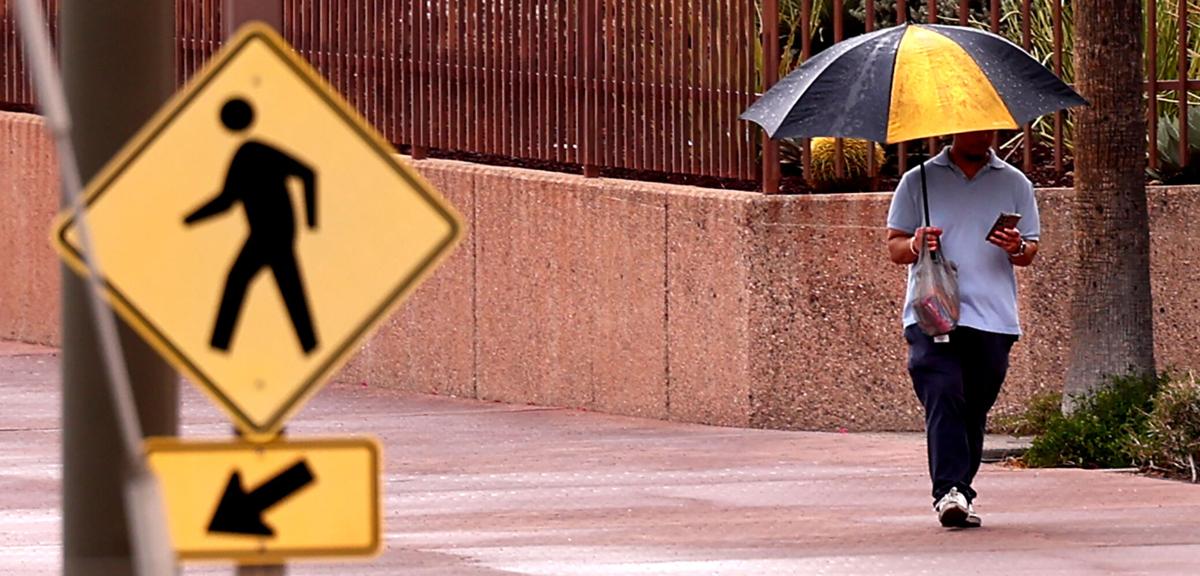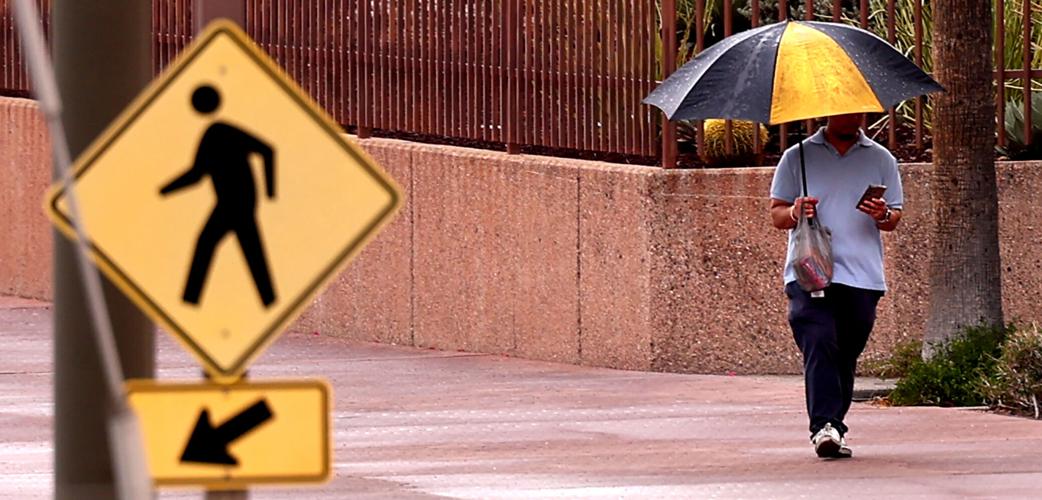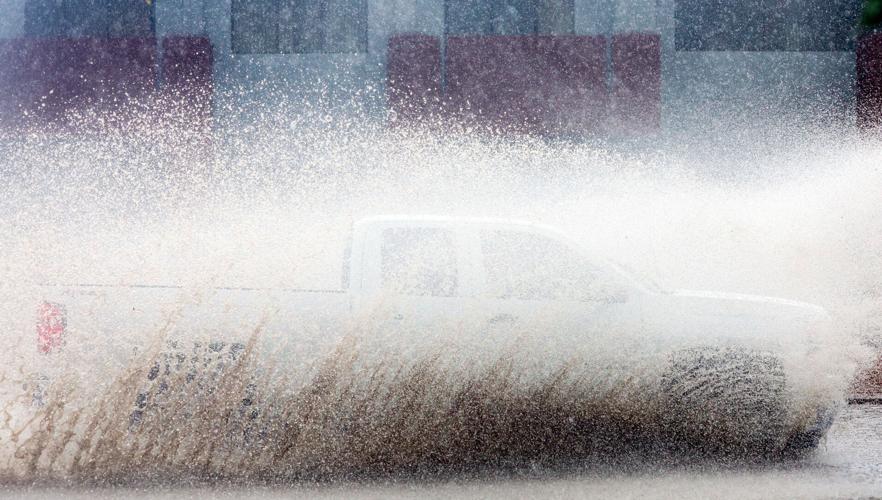Staffing issues at the National Weather Service in ├█Ķųų▒▓ź could be affecting the accuracy of monsoon storm predictions, according to a former University of ├█Ķųų▒▓ź atmospheric scientist.
About a month ago, and two of his fellow resident weather experts noticed that the Weather Service in ├█Ķųų▒▓ź had stopped posting data from its early morning weather balloon launches from the roof of its office on the U of A campus.
They soon learned that the local forecast office was no longer sending up balloons for so-called ŌĆ£atmospheric soundingsŌĆØ at 5 a.m. due to an apparent lack of overnight staffing.
ThereŌĆÖs just one problem with that, Leuthold said: Those morning balloon flights are vital, especially at this time of year. ŌĆ£ItŌĆÖs the most important forecast tool for afternoon thunderstorms in ├█Ķųų▒▓ź,ŌĆØ he said.
People are also reading…
Due to staffing issues, the ├█Ķųų▒▓ź NWS is no longer sending up a 12Z sounding. This sounding is a meteorologist's most important short-term monsoon forecasting tools. This data is also critical for the accurate weather modeling of monsoon thunderstorms. #azwx @timsteller.bsky.social
ŌĆö Mike ()
For decades, Weather Service offices across the country have been twice a day to capture a synchronized snapshot of atmospheric conditions. The standard times for these coordinated soundings are at midnight and noon Greenwich Mean Time, or 5 a.m. and 5 p.m. in ├█Ķųų▒▓ź.
As it turns out, 5 a.m. is an ideal time to measure the atmosphere over Southern ├█Ķųų▒▓ź in the summertime, Leuthold said, because thatŌĆÖs when the weather is likely to be the quietest ŌĆö after the nighttime cooling and before the day heats up and storms begin to develop. The result is clean data on temperature, humidity, barometric pressure and other measurements that can be used to predict where and how that dayŌĆÖs storm activity might materialize.
Recently, though, the Weather Service office in ├█Ķųų▒▓ź has switched to sending up its first balloon of the day at 11 a.m. ŌĆö and not because that time makes the most sense scientifically.
ŌĆ£ItŌĆÖs discouraging,ŌĆØ Leuthold said.
Cuts hit agency
The local forecasting office still conducts its second daily launch at 5 p.m. as usual, but the afternoon thunderstorms common at this time of year can disrupt those readings. If the storm doesnŌĆÖt ŌĆ£literally rip the balloon apart,ŌĆØ Leuthold said, the strong winds and precipitation can ŌĆ£mess up the data.ŌĆØ
├█Ķųų▒▓ź-based National Weather Service meteorologist Glenn Lader confirmed his officeŌĆÖs new schedule for balloon launches.
He said the change came as a result of ŌĆ£staffing,ŌĆØ but he referred additional questions to the public affairs office at the agencyŌĆÖs headquarters near Washington, D.C.

A weather balloons released from the rooftop of the ├█Ķųų▒▓ź forecasting office in this 2007 file photo.
In an email Thursday, Weather Service spokeswoman Erica Grow Cei said she didnŌĆÖt have personnel updates ŌĆ£specific to any local weather forecast office.ŌĆØ But Cei provided a written statement describing what she called the agencyŌĆÖs ŌĆ£current staffing posture.ŌĆØ
ŌĆ£The National Weather Service continues to meet its core missions amid recent reorganization efforts and is taking steps to prioritize critical research and services that keep the American public safe and informed,ŌĆØ the statement said. ŌĆ£NWS is committed to investing in new technology and prioritizing public safety.ŌĆØ
Those reorganization efforts have included sweeping as part of the Trump administrationŌĆÖs campaign to dramatically shrink the size of the federal workforce. The administration also 100 or more probationary Weather Service employees.
The agency continues to shuffle its remaining workforce to backfill vacant roles at forecast offices with ŌĆ£the greatest operational need,ŌĆØ ThursdayŌĆÖs statement from headquarters said.
ŌĆ£A targeted number of permanent, mission-critical field positions will soon be advertised under an exception to the Department-wide hiring freeze to further stabilize frontline operations,ŌĆØ the statement said.
Later flights
In March, the Associated Press reported that the agency had begun reducing or eliminating regular balloon launches at eight locations in the Rocky Mountains and Upper Midwest due to massive job cuts. At the time, experts warned that such cutbacks could weaken the agencyŌĆÖs ability to predict severe weather events.
Leuthold said across the Western U.S. have also abandoned their traditional, early morning balloon launches in favor of ones 6 hours later, during the day shift. They include places such as Albuquerque; Grand Junction, Colorado; Great Falls, Montana; Amarillo, Texas; and Spokane, Washington.
ŌĆ£ItŌĆÖs not just ├█Ķųų▒▓ź,ŌĆØ he said.
Flagstaff now launches at 5 a.m. and 11 a.m., something Leuthold described as ŌĆ£weird.ŌĆØ
The helium-filled latex balloons soar to an altitude of about 100,000 feet, towing sensor packets called radiosondes that collect and transmit measurements as they rise.
Though modern forecasting is heavily reliant on computer modelling, satellites, radar and other ground-based instruments, the information gathered by balloon remains ŌĆ£the gold standard for atmospheric science,ŌĆØ Leuthold said.
The Weather Service feeds that data into its computer models and uses it to calibrate the real-time readings from its remote sensors. All the forecasts you see on TV or read in the newspaper are rooted in what gets sent back from weather balloons, he said.
Before computer modelling was developed, the sounding data was the primary method of forecasting afternoon thunderstorms, Leuthold said.
He knows something about all of this. He spent more than 30 years as a research meteorologist at the U of A. ŌĆ£They still use the computer model I developed starting in 2003 for forecasting the monsoon,ŌĆØ he said.
Pressure rising
Weather forecasting has greatly improved over the past three decades, thanks to advances in technology and modeling.
ŌĆ£It used to be a 30% chance of rain everyday,ŌĆØ Leuthold said of monsoon forecasts from the 1980s. ŌĆ£YouŌĆÖd never attempt to predict storms in specific places and times.ŌĆØ

A truck drives through flooded streets as heavy rain showers hit ├█Ķųų▒▓ź earlier this month.
The National Weather Service has come under harsh scrutiny since July 4, when flashflooding on the Guadalupe River in Texas killed at least 120 people, including dozens of children from youth camps built along the water.
Leuthold thinks the agency and its forecasters are being unfairly blamed. ŌĆ£The Weather Service from what I saw did a pretty good jobŌĆØ issuing warnings and emergency alerts hours in advance, he said. State and local authorities simply didnŌĆÖt have adequate warning and evacuation systems in place along the flood-prone river, Leuthold said.
In his opinion, predicting is ŌĆ£one of the hardest things meteorologists do,ŌĆØ because the thunderstorms form so quickly in such a localized and chaotic way, he said.
ThatŌĆÖs why having the most accurate and timely data is so important. Just a 10% variation in atmospheric moisture level or instability can result in a ŌĆ£big change either way,ŌĆØ Leuthold said. ŌĆ£A small error can be really magnified. A storm can turn out to be much more severe or much less.ŌĆØ
The 11 a.m. weather balloon launches are ŌĆ£better than nothing,ŌĆØ he said, but the data probably comes too late to help shape the computer-model forecasts for thunderstorm activity in the afternoon.
The early-morning launch window is best for that, especially during monsoon season, he said. ŌĆ£Even if they were to do it only once a day, 5 a.m. is the one they should do.ŌĆØ











